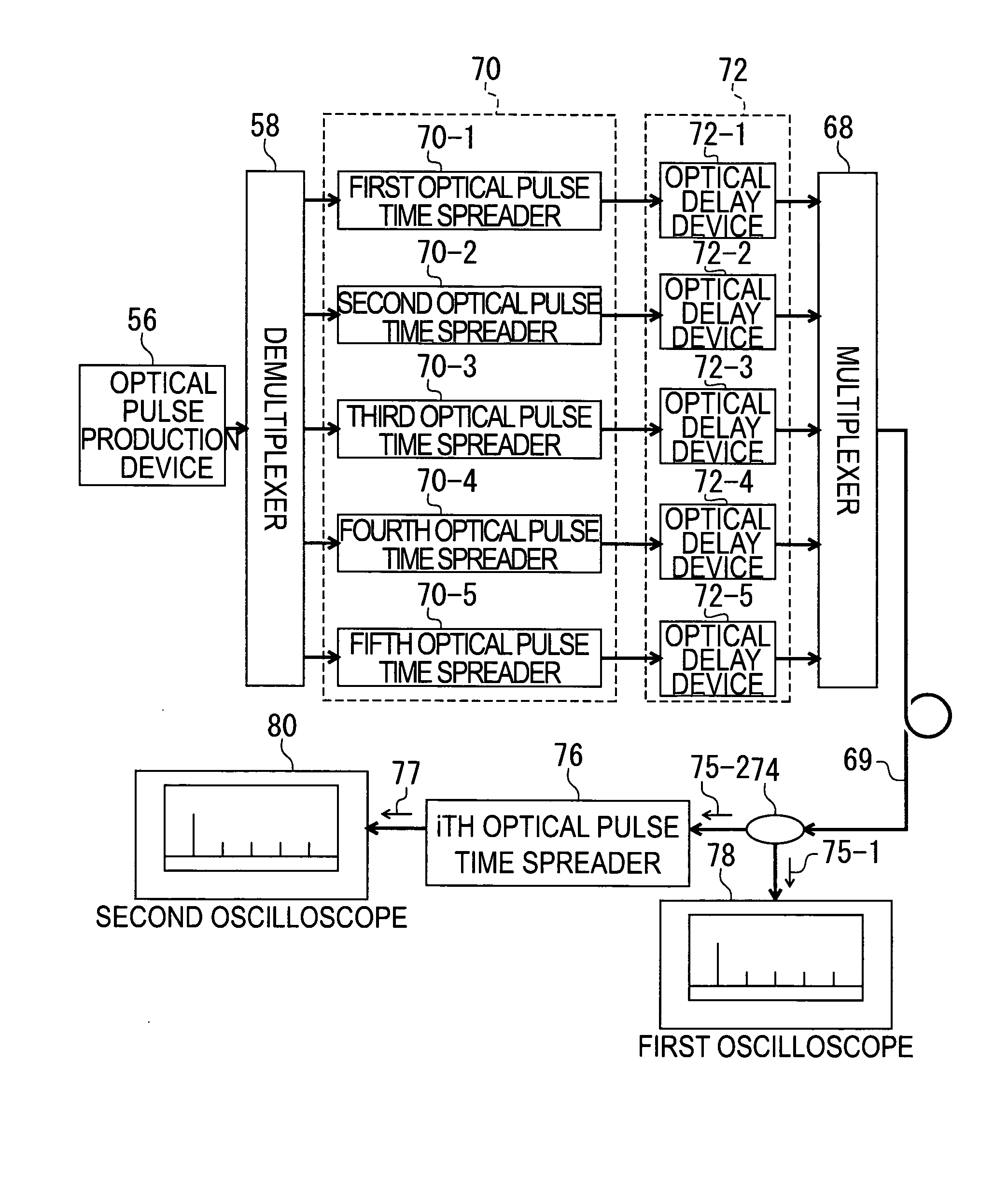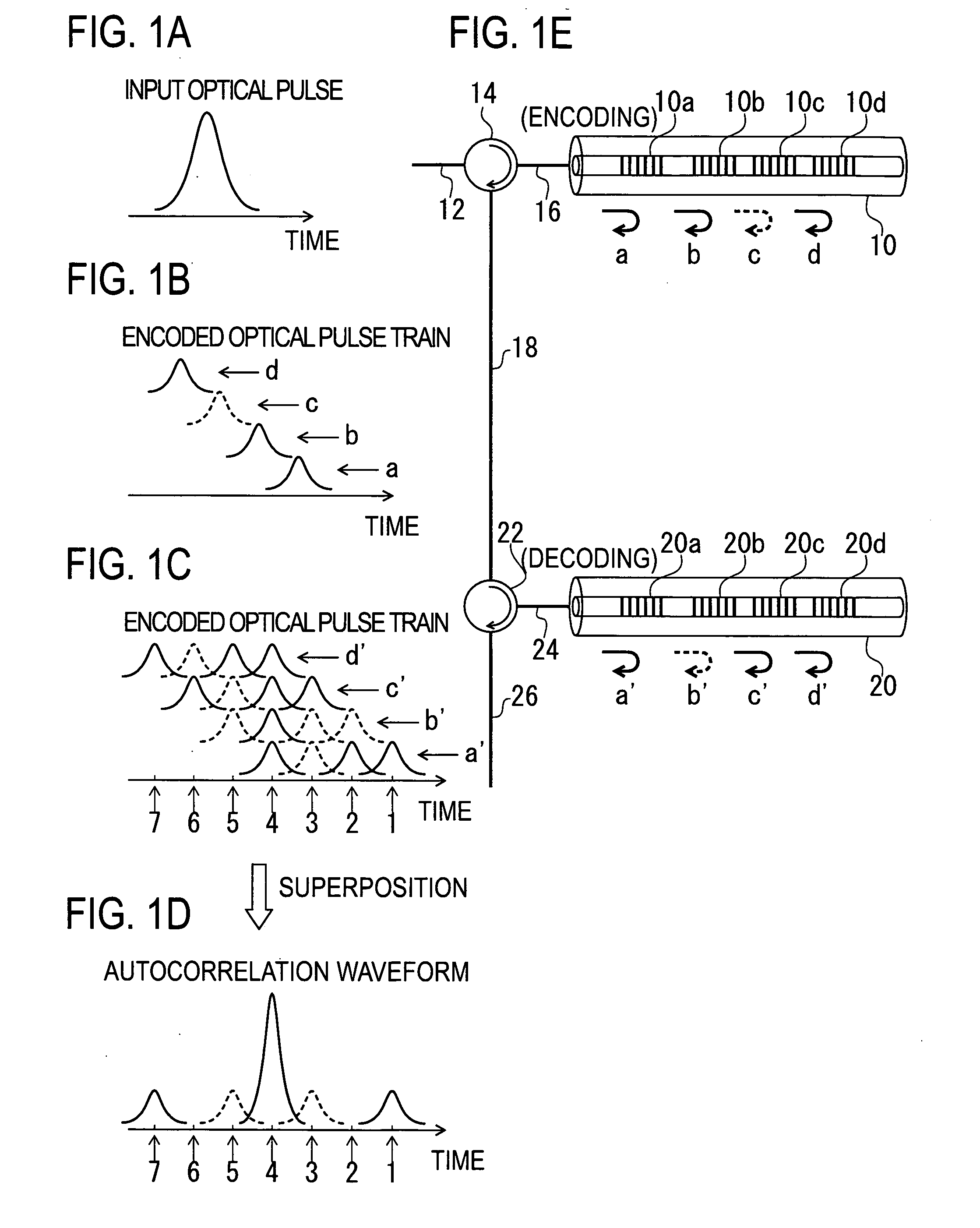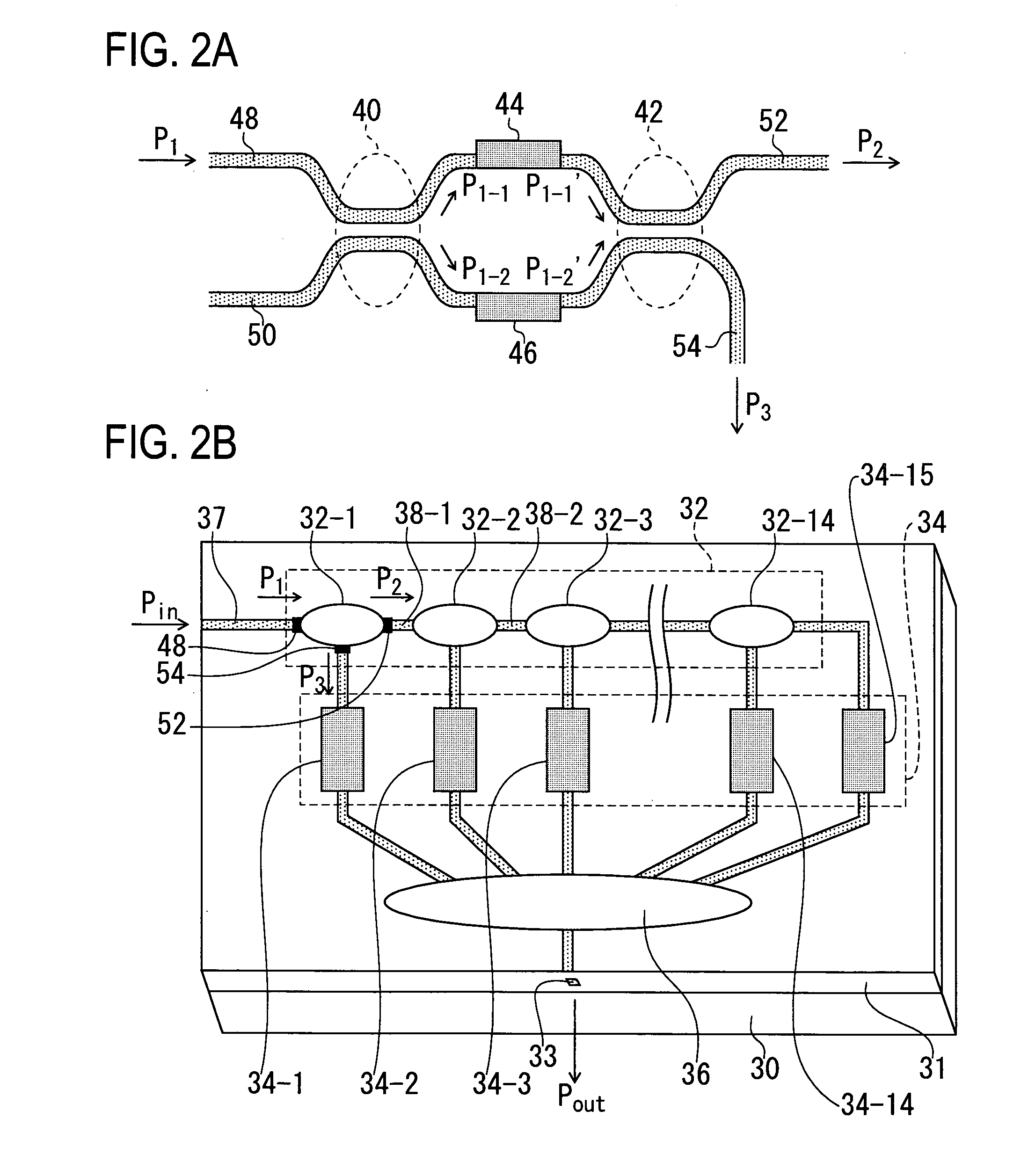Optical pulse time spreading device
- Summary
- Abstract
- Description
- Claims
- Application Information
AI Technical Summary
Benefits of technology
Problems solved by technology
Method used
Image
Examples
Embodiment Construction
[0075] Embodiments of the present invention will be described hereinbelow with reference to the drawings. Further, each of the drawings merely shows a constitutional example of the present invention and schematically shows the respective constituent elements and dispositional relationship and so forth to an extent permitting an understanding of the present invention. The present invention is not limited to or by the illustrated examples. Further, although specified conditions and so forth are sometimes used in the following description, these conditions and so forth are merely an example of a suitable example. The present invention is not limited to the conditions and so forth in anyway. Moreover, the same numbers are shown assigned to the same constituent elements in each of the drawings and repetitive description is also omitted.
[0076] Optical Pulse Time Spreading Device
[0077] First, the relationship between the optical phase codes set for the respective optical pulse time sprea...
PUM
 Login to View More
Login to View More Abstract
Description
Claims
Application Information
 Login to View More
Login to View More - R&D
- Intellectual Property
- Life Sciences
- Materials
- Tech Scout
- Unparalleled Data Quality
- Higher Quality Content
- 60% Fewer Hallucinations
Browse by: Latest US Patents, China's latest patents, Technical Efficacy Thesaurus, Application Domain, Technology Topic, Popular Technical Reports.
© 2025 PatSnap. All rights reserved.Legal|Privacy policy|Modern Slavery Act Transparency Statement|Sitemap|About US| Contact US: help@patsnap.com



